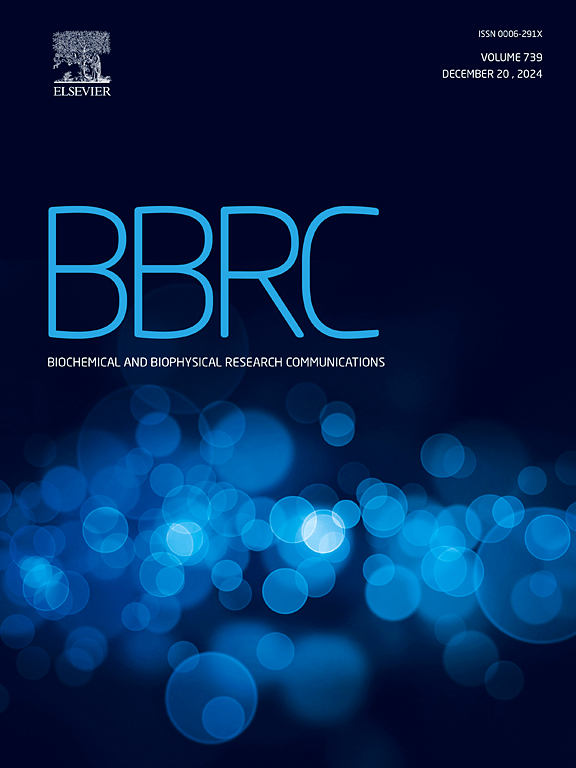Self-association activates ThsB NAD+ hydrolase for defense against phage infection
IF 2.5
3区 生物学
Q3 BIOCHEMISTRY & MOLECULAR BIOLOGY
Biochemical and biophysical research communications
Pub Date : 2025-06-17
DOI:10.1016/j.bbrc.2025.152217
引用次数: 0
Abstract
Toll/interleukin-1 receptor (TIR) domain serves as a canonical component in both animal and plant innate immunity pathways and is indicated, in some cases, to mediate nicotinamide adenine dinucleotide (NAD+) cleavage via self-association. Recent studies have revealed the involvement of TIR domains in a bacterial anti-phage defense system called Thoeris. The Thoeris system consists of two core proteins, ThsA and ThsB. Phage infection triggers the TIR-containing ThsB to produce an isomer of cyclic ADP-ribose, which is then transferred to and activates ThsA, leading to NAD+ depletion and subsequent cell death. However, the mechanism of ThsB activation remains elusive. Here, we present high-resolution crystal structures of E. coli ThsA and ThsB. Notably, an intact NAD+ molecule is observed in the active site of ThsB, implying that monomeric ThsB does not possess NADase activity. We demonstrate that ThsB forms 7-fold oligomers through negative staining electron microscopy, suggesting that self-association activates ThsB NAD+ hydrolase. Our findings indicate a new TIR self-association assembly in bacterial anti-phage systems.
自结合激活ThsB NAD+水解酶防御噬菌体感染
Toll/白细胞介素-1受体(interleukin-1 receptor, TIR)结构域在动物和植物先天免疫途径中都是一个典型的组成部分,在某些情况下,被证明可以通过自结合介导烟酰胺腺嘌呤二核苷酸(NAD+)的裂解。最近的研究表明,TIR结构域参与细菌抗噬菌体防御系统Thoeris。Thoeris系统由两种核心蛋白ThsA和ThsB组成。噬菌体感染触发含有tir的ThsB产生环adp核糖的异构体,然后将其转移到并激活ThsA,导致NAD+耗尽和随后的细胞死亡。然而,ThsB活化的机制仍不清楚。在这里,我们展示了大肠杆菌ThsA和ThsB的高分辨率晶体结构。值得注意的是,在ThsB的活性位点观察到一个完整的NAD+分子,这意味着ThsB单体不具有NADase活性。我们通过阴性染色电镜证明ThsB形成7倍低聚物,表明自结合激活ThsB NAD+水解酶。我们的发现表明在细菌抗噬菌体系统中存在一种新的TIR自结合组装体。
本文章由计算机程序翻译,如有差异,请以英文原文为准。
求助全文
约1分钟内获得全文
求助全文
来源期刊
CiteScore
6.10
自引率
0.00%
发文量
1400
审稿时长
14 days
期刊介绍:
Biochemical and Biophysical Research Communications is the premier international journal devoted to the very rapid dissemination of timely and significant experimental results in diverse fields of biological research. The development of the "Breakthroughs and Views" section brings the minireview format to the journal, and issues often contain collections of special interest manuscripts. BBRC is published weekly (52 issues/year).Research Areas now include: Biochemistry; biophysics; cell biology; developmental biology; immunology
; molecular biology; neurobiology; plant biology and proteomics

 求助内容:
求助内容: 应助结果提醒方式:
应助结果提醒方式:


